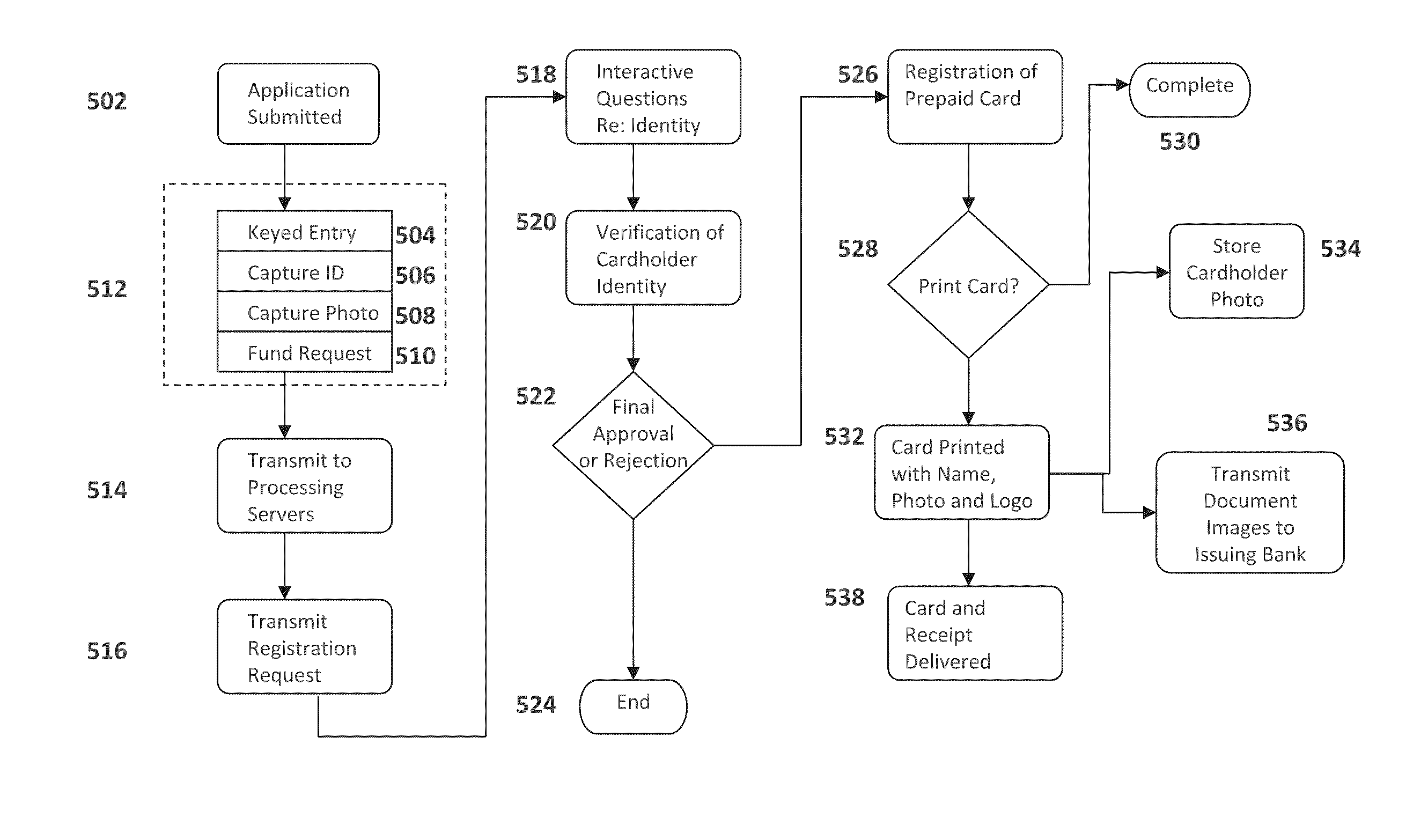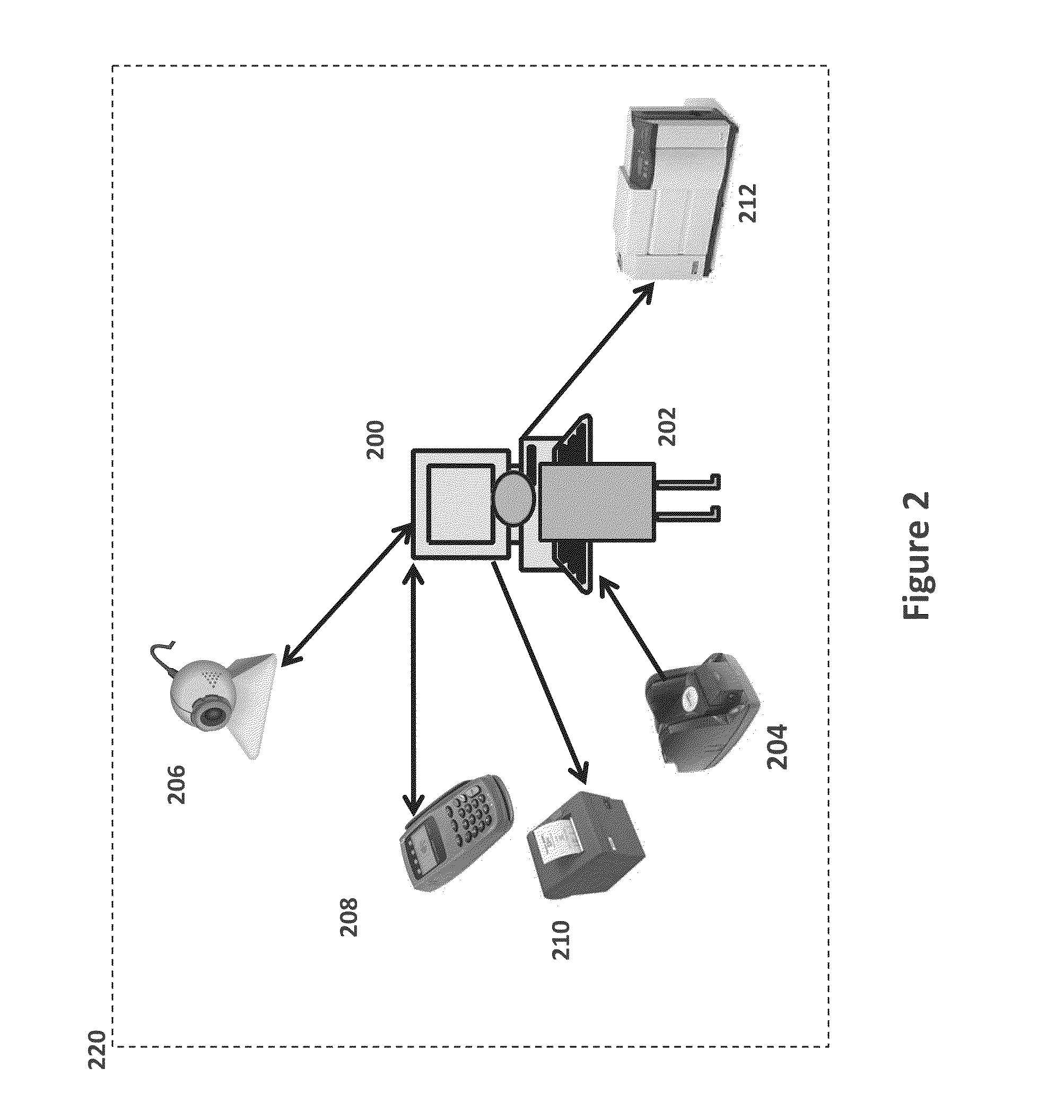As such these types of cards present an inherent flaw and can be very risky for merchants without fail-safe systems in place to monitor transactions of this nature.
First, prepaid cards offered through the above-described system (usually referred to as “gift cards”) are typically only offered for purchase in predetermined amounts and do not allow a user to specify an amount.
Second, the gift cards are generally discarded after use because they are not replenishable.
Further, as mentioned, gift cards are often received by the merchant in an already activated state (or may be activated in bulk by the merchant) subjecting them to theft and potentially unauthorized use.
Finally, gift cards are essentially bearer cards and provide no security to determine whether the person utilizing the card is authorized to deplete the funds associated with the card.
First, since a user typically uses a single card to make a limited number of telephone calls, the user must reacquaint him or herself with a new ten digit identification number and four digit
personal identification number upon the purchase of each subsequent card.
Similarly, if the card is lost or stolen, any person having access to the card can deplete the minutes associated therewith.
Next, similar to the gift cards, a user who has depleted the minutes associated with a particular
telephone card generally discards the card and purchases a new card, which requires an additional cost for the merchants.
Finally, prepaid telephone cards have no
security measure to determine whether the person utilizing the card is authorized to deplete the minutes associated with the card.
One drawback to the Offline Debit
System is the time between purchase and when the transaction appears on a user's account, historically the industry has recognized a two to three day period, however this window is decreasing as a result of system improvements and
processing requirements.
Such information is generally limited to the card purchaser's name, address, and other basic identifying information.
First and foremost, security measures are virtually non-existent with present systems.
Second, the existing systems for issuing debit cards are cumbersome, timely, and expensive.
It is apparent to one of ordinary skill in the art that such a system results in needless expense as the
processing requires
human interaction, postal fees, and the preparation and production of two cards.
While this type of system overcomes certain flaws of this system described in the aforementioned U.S. Pat. No. 6,832,720, both systems still exhibit numerous disadvantages to the
consumer, the issuing institution, and on a broader scale, the national security of a nation.
First, and most importantly, no safeguards are in place to verify the identity of the purchaser and that the purchaser is authorized to carry a card of this nature.
Also, with respect to the present system, the method of providing pre-determined monetary values is restrictive as the purchaser cannot choose the specific value of the prepaid card.
As a result,
threat of cards of this nature is rampant—clearly, a further
threat to the security of a nation.
That is, while the disclosed system and method provides for security of the card prior to activation, it does not provide for any security measures once the card has been activated.
The disclosed system and method does not ensure that the person utilizing the card is authorized to deplete the funds associated with the card.
Finally, the disclosed system requires cards to carry an
embedded value and as a result such value can not be increased as a result of reloading the card.
Therefore, a user who has depleted the funds associated with a particular card discards the card and purchases a new card, requiring additional cost for the issuers.
Importantly, the card as described within the disclosed system and method contains limited and arguably ineffective security measures to ensure that the person utilizing the activated card is authorized to deplete the funds on the card.
While it is true that the system and method described in U.S. Pat. Nos. 6,473,500 and 7,252,226 provides slightly more security than the systems described above, simply allowing the user to choose the personal identification number does not provide additional security to ensure that the user of the card is authorized to utilize the funds associated therewith.
In addition, the system and method disclosed in U.S. Pat. Nos. 6,473,500 and 7,252,226 do not provide for any security with respect to the identity of the user.
One of ordinary skill in the art will readily recognize that such a safeguard is limited, especially against terrorist activities plaguing systems of this nature.
Considering the contemporaneous environment with respect to global war and terrorism issues, it is a
disadvantage of the disclosed system that the system does not perform any
verification of the purchaser prior to issuing the prepaid card.
Several drawbacks exist with respect to the existing system as described by U.S. Pat. No. 7,614,549.
Importantly, the card that is immediately issued provides no security measures to ensure that the card is only used by the authorized account-holder—a substantial
threat to the security of any nation as previously mentioned.
Therefore, upon subsequent uses, the identity of the user is relatively unknown and no safeguards are in place to confirm that the card user is the same person as the card purchaser (e.g., the card does not provide any security that the bearer is authorized to utilize the funds (or credit) associated with the card).
Further, while the patent specification discloses credit application
verification, there is no
verification with respect to the identity of the purchaser.
The system and method disclosed in U.S. Pat. No. 7,614,549 does not provide for any security measures to ensure that the purchaser is accountable for the use of the transaction card.
 Login to View More
Login to View More  Login to View More
Login to View More 


